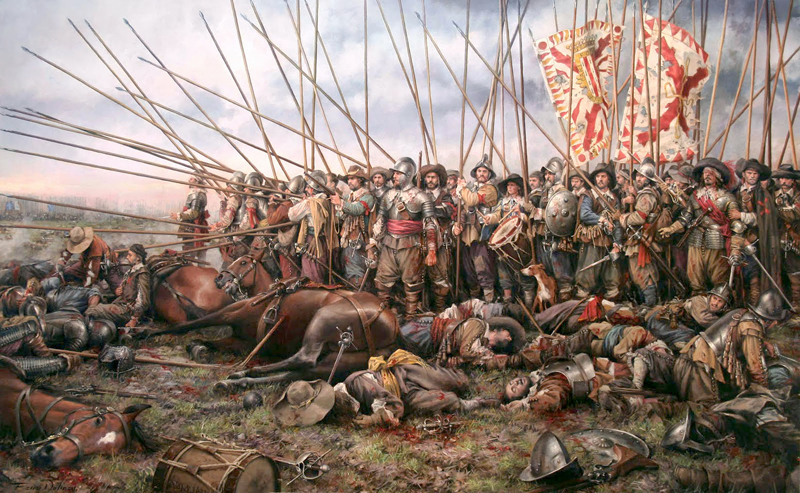If it were fiction, I wouldn't believe it!
- Every time the Netflix digital platform releases a new series (Stranger Things, Narcos, Black Mirror…) it has achieved a great ability to create a great expectation. Even when they put in the catalog a production film of their own (Annihilation, Okja…), everyone is attentive. But once the documentaries are inserted, they become jobs with a high risk of ostracism, as in most cases they are left out of promotional campaigns and are only used to fill thick lists of contents. That’s why I’ll do everything in my power to publicize the amazing documentary series Wild Wild Wild Country, which premiered a few weeks ago.

The first minutes of the series took us to the 1980s to present the village of Antelope in Oregon (USA). It is an area of about 40 inhabitants and is the destination that many people choose to live peacefully their last years of old, after having worked their whole lives. But the moment a strange rumor spreads, that calmness is broken – and also! They say that on a Rolls-Royce there will be a very important – and rich – Indian guy, who will buy 30,000 acres of side and start building hundreds of buildings and homes. Within a few seconds, the village will begin to be filled with hundreds of people dressed in red to bloom and, behind that, the already mentioned Rolls-Royce. The arrival that will take place in Antelope will cause a whirlwind, full of hundreds of events that will cost you to believe.
This production shows a curious episode in the history of the United States:
When the followers of a spiritual leader built their city in Oregon lands.
This fascinating work, led by Chapman and Maclain Way and composed of six episodes, shows a curious episode in the history of the United States, an amazing event that surprised the entire world: When spiritual leader Bhagwan Shree Rajneesh and the followers of his sect built his city in Oregon lands, and the terrible, savage and grim consequences that it would have. They were charged with several murders, several espionage cases, and a bio-terrorism attack in order to win the elections, among other crimes.
Relying on a real case has many advantages, but also many problems that can put the brake on the wheels of the story. The lack of archival images, for example, often causes bad recreations of the facts, taking away some credibility from the whole. In this case, they have been able to strengthen most of the weaknesses, creating a single suspense exercise. Some of these necessary recreations are explained, for example, through explanatory animated sequences, intercaling interviews with characters who were the protagonists of that time. The rest is made up of stunning stock images. Before addressing the crime that is announced in the early minutes of the documentary, for example, they have tried to rewind until the 1960s and explain why that fascination: at that time all known social and political referents were questioned, speaker and philanthropist Bhagwan shows us how he became a kind of “rock star” in his country and how he managed to conquer the heart – and mind – of thousands of foreign people. Suddenly, there were thousands of people who joined that message that they didn't understand very well, especially because they were wanting to be part of any counterculture movement. From then on, Sheela, so important, was the secretary of Osho, alias of Bhagwan Shree Rajneesh, and the principal head of the diaspora to be explained later.
In addition to having a conflict, curious characters and a compelling story, the authors have invented the story, organizing the material in a very special way.
I think the serial documentary Wild Wild Country has many merits. Because it offers the possibility of seeing an original material of great value, but above all, because it tries to explain the responsibility that most of those involved have had at every moment. The creators have wanted to show complete impartiality, and that, in a story of this kind, is to be welcomed: it is in the hands of the spectator on which side it is located, although in most cases I do not doubt what the images indicate.
Think that having conflicts, curious characters and a compelling story is having a lot of advantages in favor of production. Yes and no. For the better and for the worse, because all this material becomes a field, how and why it has to be trimmed and distributed; but that is not what they have been caught up in, because they have had some unique scriptwriters and assemblers who have been able to intelligently organise all that information. Not only that: Adam Stone’s brilliant photographic direction that shows the past and the present and the ironic musicalization of Brocker Way, which is explained at times, help the viewer to give a reasonable point of view to a complex, painful and sometimes sad story.
Being the real story that you've decided to tell in documentary format, I found it a unique, amazing, great story. If I had seen the same story in a fictional movie, with an invented script, I would have thought that this is an absurd, absurd and unbelievable story. If it were fiction, I wouldn't believe it!
B. It is one of the television references that marked the adolescence of A. He would like A to be an actor known as B. They both have a gang of friends that doesn't come out of the ordinary, but what differentiates is adolescence. B lived a stranger, participated in a public... [+]
Gertatuko zitzaizuen: leku guztietan sekulakoa balitz bezala iragarri duten pelikula edo telesaila ikusi ondoren, frustrazio pixka batekin, “ez zen hainbesterako” esaten bukatu duzue. Eta azkenaldian inoiz baino gehiagotan gertatzen zaizue. Lasai, ez zaudete seko... [+]






















